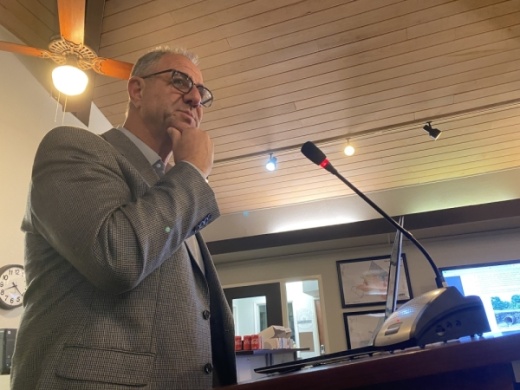A yearlong study on Rollingwood’s drainage and infrastructure needs has produced a final update from K. Friese & Associates, a civil engineering firm officials hired to provide an assessment regarding improvements throughout the city.
However, a last-minute discovery from K. Friese representative Joe Cantalupo of a cost estimate miscalculation prompted him to request a reworking of the numbers and a return to council with an accurate presentation.
Aside from that misstep, council did discuss a sizable chunk of the report's implications.
K. Friese representatives spent the first half of 2019 conducting public surveys, fieldwork and modeling to present the final draft of the needs assessment to City Council during its Feb. 19 meeting.
Of 23 identified, the five projects given top priority have not changed since they were first introduced to council in October 2019. Those are for areas within Bee Caves Road; Edgegrove Drive; Nixon Drive and Pleasant Roadway; Pleasant Drive; and Timberline and South Crest drives.
All 23 projects combine to form a cost estimate of $19.72 million, but it is yet to be determined if council will pursue every project, the top recommended projects or some other combination therein.
Cantalupo said on Feb. 19 one reason the cost estimates went up about $4 million from the initial $15.4 million estimation in October has to do with considerations based on an updated national rainfall study called Atlas 14. That study has shifted the definition of flood plains, meaning they now or could soon cover more land throughout the country, which could have implications for Rollingwood’s infrastructure improvement plan.
During the Oct. 16 presentation, Cantalupo said some communities have adopted what are currently considered 500-year flood events as 100-year flood events. That strategy is pursuant to the findings of Atlas 14, and it is one standard Rollingwood officials could take in consideration of this needs assessment, he said.
During the Feb. 19 meeting, Cantalupo said design estimates could come down depending on a number of factors.
"We gave you a big picture view of what the challenges are facing the city, ... but you're not going to get the true picture of the costs until you tackle it one by one," he said.
Regarding the miscalculation, Cantalupo said he had that night noticed a glaring error in an estimation of the Nixon Drive and Pleasant Roadway improvements. The final draft totaled the cost of that project at $6.872 million, but Cantalupo said based on his calculations, it should actually be somewhere around $4 million or $5 million.
"We made a mistake, and ... I want to work on the math and we'll come back to it, [but otherwise] the basis of the cost estimates we believe is very sound," he said. "I really do apologize for that error, and we will go back and make sure nothing else was calculated incorrectly."
Before the presentation concluded, Council Member Sara Hutson said she wanted to know how K. Friese's models determined the percentage of impervious cover throughout Rollingwood's roughly one square mile area, to which Cantalupo said he did not know and would have to ask the modeler and return with an answer.
As it pertains to next steps, the K. Friese presentation states “while this plan provides a preliminary assessment of top drainage issues and potential solutions across the City of Rollingwood, additional study, coordination, analysis and design are required for implementation.”
The final report also recommends Rollingwood officials coordinate with the City of Austin Watershed Protection Department to discuss any required permitting and mitigation measures the projects might have on downstream Austin waterways.
Council concluded the presentation with no action taken, and Cantalupo said he would have accurate new cost estimates much sooner than the March 18 regular meeting.





